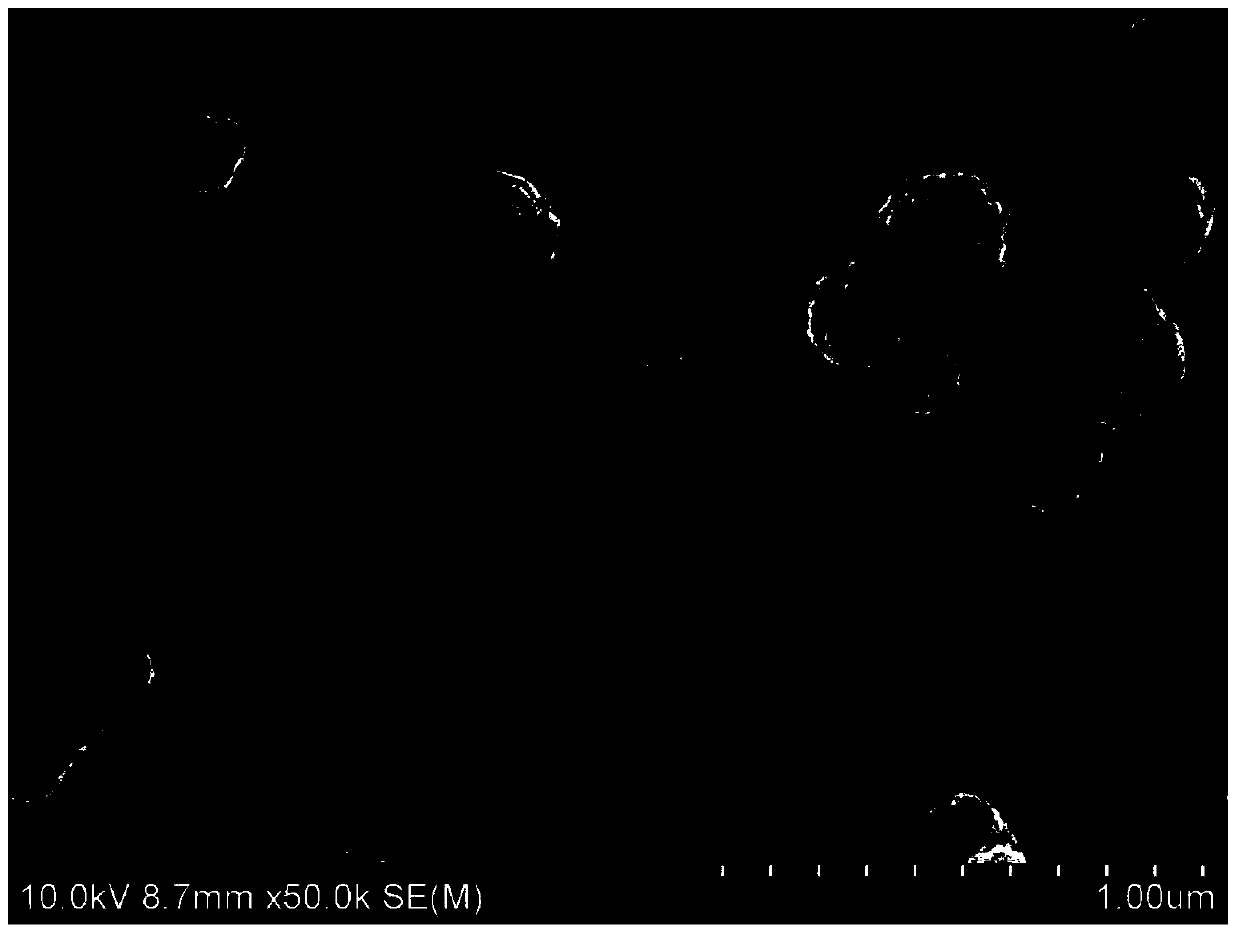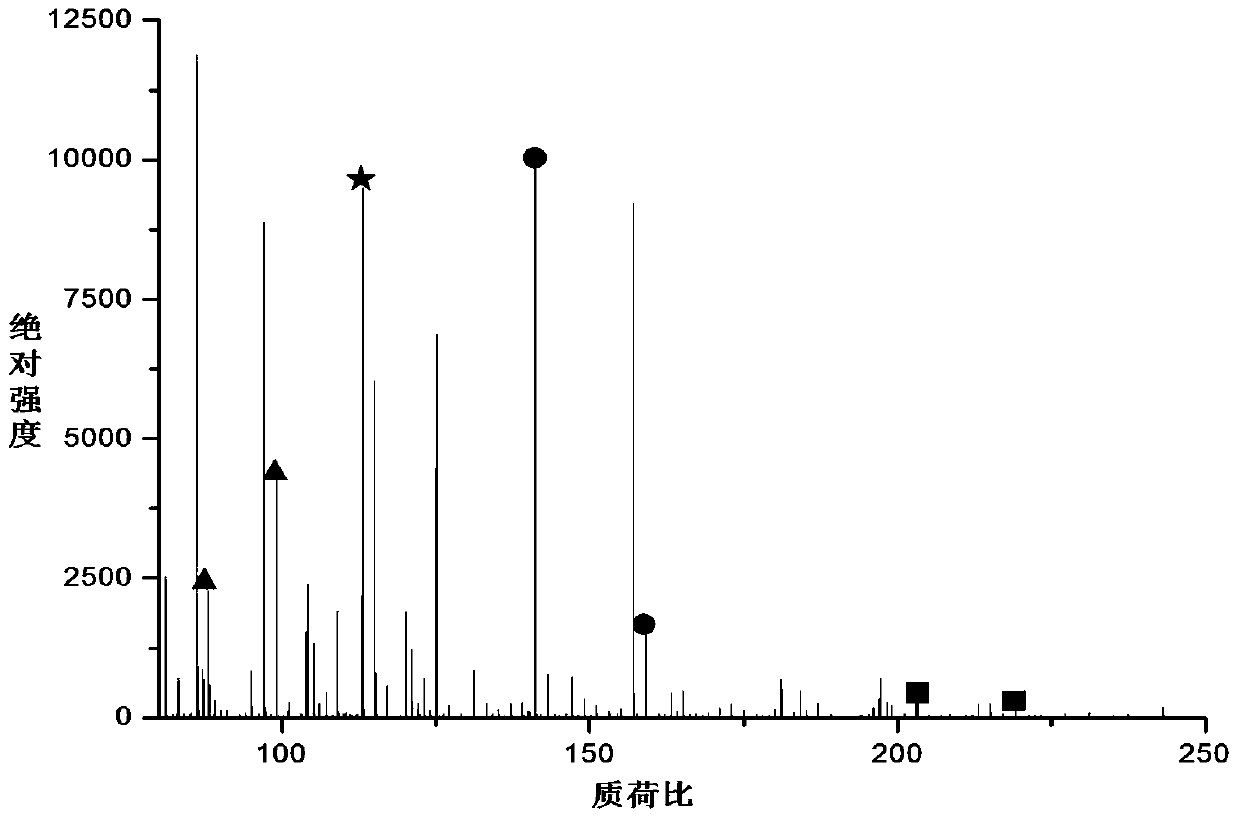A method for detecting small molecule metabolites in exosomes using mass spectrometry
A technology for detecting small molecule metabolites and mass spectrometry, which is applied in the field of detection of small molecule metabolites in exosomes by matrix-assisted laser desorption ionization mass spectrometry, achieving the effects of high salt tolerance, low preparation cost, and simple steps
- Summary
- Abstract
- Description
- Claims
- Application Information
AI Technical Summary
Problems solved by technology
Method used
Image
Examples
preparation example Construction
[0032] The preparation of the iron-containing oxide nanoparticle matrix comprises the following steps:
[0033] Step 1: dissolving ferric chloride and trisodium citrate in ethylene glycol solution;
[0034] Step 2: Add sodium acetate to the above mixed solution, and sonicate at room temperature for half an hour until the solution becomes a homogeneous system;
[0035] Step 3: The reaction will be carried out in a Teflon high-pressure reactor, and the reaction will be carried out at 150-195 degrees Celsius for more than 8 hours to form iron-containing oxide nanoparticles;
[0036] Step 4: repeatedly washing the iron-containing oxide nanoparticles obtained in step 3 with ethanol and deionized water, and finally drying at 62-70 degrees Celsius for use;
[0037] Step 5: Resuspend the iron-containing oxide nanoparticles in deionized water and use them as a matrix.
[0038] Characterization of the matrix:
[0039] The instruments used for characterization are: The instruments use...
Embodiment 1
[0043] Example 1: Detection of metabolic small molecules in exosomes extracted from serum
[0044] (1) Preparation of instruments and reagents: laser desorption ionization mass spectrometer, only mass spectrometry signals with a signal-to-noise ratio greater than 10 are used for analysis. Using AB SCIEX TOF / TOF TM 5800 mass spectrometer, Nd:YAG laser, wavelength 355nm. The pulse electric field delay extraction and reflection working mode is adopted, and the positive ion mode is used for detection. DataExplorer was used to observe, process, and analyze data, and only mass spectrometer signals with a signal-to-noise ratio greater than 10 were used for analysis.
[0045] (2) Preparation of iron-containing oxide nanoparticles.
[0046] (3) Take 1ml-10ml of serum, extract exosomes by ultra-high speed centrifugation at 15000-25000G for 4-10 hours, and prepare an exosome solution with a concentration of 0.1mg / ml-10mg / ml.
[0047] (4) The MALDI target plate was ultrasonically cle...
Embodiment 2
[0051] Example 2: Detection of metabolic small molecules in exosomes extracted from cells
[0052] (1) Preparation of instruments and reagents: laser desorption ionization mass spectrometer, only mass spectrometry signals with a signal-to-noise ratio greater than 10 are used for analysis. Using AB SCIEX TOF / TOF TM 5800 mass spectrometer, Nd:YAG laser, wavelength 355nm. The pulse electric field delay extraction and reflection working mode is adopted, and the positive ion mode is used for detection. DataExplorer was used to observe, process, and analyze data, and only mass spectrometer signals with a signal-to-noise ratio greater than 10 were used for analysis.
[0053] (2) Preparation of iron-containing oxide nanoparticles.
[0054] (3) Take 1ml-10ml cell solution (suitable for various types of cells), extract exosomes by ultra-high speed centrifugation at 15000-25000G for 4-10 hours, and prepare exosomes with a concentration of 0.1mg / ml-10mg / ml solution.
[0055] (4) The...
PUM
| Property | Measurement | Unit |
|---|---|---|
| diameter | aaaaa | aaaaa |
| size | aaaaa | aaaaa |
| diameter | aaaaa | aaaaa |
Abstract
Description
Claims
Application Information
 Login to View More
Login to View More - R&D
- Intellectual Property
- Life Sciences
- Materials
- Tech Scout
- Unparalleled Data Quality
- Higher Quality Content
- 60% Fewer Hallucinations
Browse by: Latest US Patents, China's latest patents, Technical Efficacy Thesaurus, Application Domain, Technology Topic, Popular Technical Reports.
© 2025 PatSnap. All rights reserved.Legal|Privacy policy|Modern Slavery Act Transparency Statement|Sitemap|About US| Contact US: help@patsnap.com



